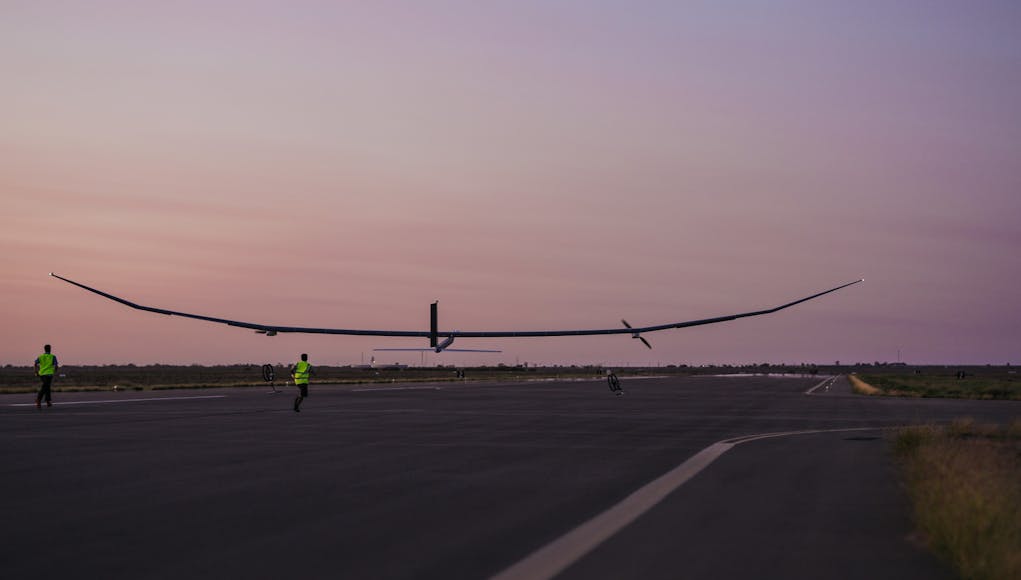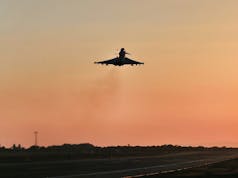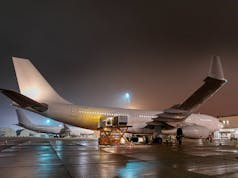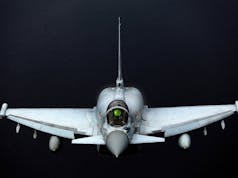The Persistent High Altitude Solar Aircraft (PHASA-35) has the potential to stay airborne for a year.
PHASA-35, a 35m wingspan solar-electric aircraft has successfully completed its maiden flight.
BAE Systems say in a press release received today that PHASA-35 has been designed, built and now flown in less than two years as part of a collaboration between BAE Systems and Prismatic Ltd, which the firm agreed to acquire last year.
“Designed to operate unmanned in the stratosphere, above the weather and conventional air traffic, PHASA-35 offers a persistent and affordable alternative to satellites combined with the flexibility of an aircraft, which could be used for a range of valuable applications including forest fire detection and maritime surveillance. Sponsored by the UK’s Defence Science and Technology Laboratory (DSTL) and Australian Defence Science and Technology Group (DSTG), the successful flight trials took place at the Royal Australian Air Force (RAAF) Woomera Test Range in South Australia.

The trials marked the first fully integrated flight test of the PHASA-35 system, delivering rapid proof of capability from design to flight in just 20 months. They are the culmination of efforts from a collaborative team of British experts from Prismatic in Hampshire – where two full-sized concept aircraft were built last year – working alongside BAE Systems engineers in Lancashire, where the aircraft underwent further integration testing prior to flight trials.”
BAE Systems say that as a High Altitude Long Endurance (HALE) vehicle, PHASA-35 is powered by the Sun during the day and by batteries overnight.
“The long-life battery and highly efficient solar technology could allow the aircraft to maintain flight for up to a year operating in the stratosphere, the upper regions of the Earth’s atmosphere. PHASA-35 is designed to provide a persistent, stable platform for monitoring, surveillance, communications and security applications.
When connected to other technologies and assets, it will provide both military and commercial customers with capabilities that are not currently available from existing air and space platforms. The Unmanned Air Vehicle also has the potential to be used in the delivery of communications networks including 5G, as well as provide other services, such as disaster relief and border protection, at a fraction of the cost of satellites.”
Ian Muldowney, Engineering Director for BAE Systems, said:
“This is an outstanding early result that demonstrates the pace that can be achieved when we bring the best of British capability together. To go from design to flight in less than two years shows that we can rise to the challenge the UK Government has set industry to deliver a Future Combat Air System within the next decade.”














How does this differ from Zeypher?
That’s what I was wondering
Ones built by Airbus and one is built by BAE but that’s about it.
Hello mate, good question, I had to check.
Zephyr is produced by Airbus rather than BAE, and a number have been built as part of a staged development process that increases in size and capability with each iteration. The MOD bought 3 Zephyr S, which are apparently smaller than this BAE one with a 5 kg payload, but with a similar flight ceiling. Apparently 2 of these 3 Zephyr have crashed during testing in Australia, no idea if they were written off, but I expect so.
There is a newer model (T) in development, which seems to be about the same as this BAE one in size and payload. So BAE seem to be jumping in near the end of Airbus’ development with an equivalent product.
Other than that, very little info…
Hi Joe. Thank you.
I had no idea 2 of the 3 had crashed. So much for the noise made by HMG about them being used by the MoD to support SF.
Neither did I, until I saw a related link when checking up general Zephyr information. Interestingly there is an accident investigation report logged with Australia’s air safety bureau for the second crash, but not the first. Maybe crash number 1 didn’t do enough damage to need an investigation, and the aircraft wasn’t written off? That’d mean there are still 2 as of October 2019.
Having said that, even with a fleet of 2 remaining, I wonder how effectively they’re going to be supporting SF if at least 1 is undergoing flight testing in Australia…
As rudeboy below clarifies, Zephyr itself was a British programme undertaken by QinetiQ and sold to Airbus so the question above does thus become more pertinent and intriguing. Why was Zephyr allowed to go elsewhere while this new aircraft was developed in its place separately. Maybe it was a clever move for a change whereby what was learned from the former was directed into the new program and/or simply showed a new direction was needed, while UK Plc profits from selling off the original. Perhaps the crashes highlighted both of those arguments. Zephyr certainly has had a long gestation period so will be interesting to see how this new one compares.
Yes, Rudeboy’s additionl information is helpful.
I think, based upon that, this might just be a case of BAE “standing on the shoulders of giants”, i.e. poaching engineers from the pre-existing programme and getting a bit of a head start on development.
The Zephyrs are being operated in Australia by the MOD, or at least on behalf of them by Airbus, for testing- so they haven’t been sold off. Qinetiq just sold the programme to Airbus, the MOD as end client didn’t actually change.
Hopefully the two very similar aircraft will allow a bit of competition in a very small arena. I can see them being hugely useful, as soon as they are robust enough to reliably manage take off and landing, and as soon as they have a useful payload small enough and with low enough power consumption to be used. They may already have the second, based upon satellite tech.
Very little in concept. Quite a few Prismatic staff are from QinetiQ’s Zephyr programme. It might be that PHASA moves it on a little, their batteries for example are blocks of mobile phone batteries, far cheaper than customer designs.
It will be good to give the Zephyr a run for its money, particularly on larger developments (i.e. Zephyr T) where more payload can be lofted.
Thanks, didn’t know they’d poached some engineers- I was wondering how BAE would catch up!
I know it kindof goes against the concept of the design, but making it just a bit more robust might be an idea. They chose Australia specifically for the kind weather conditions, yet they’ve still managed to write off at least one. Trying to launch for routine ops in the UK might be a challenge…
Nice! Any idea what payload it can carry?
The payload is given in the infographic by the looks of it. 15kg.
I can see the day when this or Zephyr or something like it would be a routine part of a carrier deployment. Hanging around above the group providing Comms or Elint support.
The other ‘new’ tech that could perhaps fulfil a role are the Hybrid Air vehicles. I can see one of them over the fleet providing AWACS coverage. They can stay airborne for days on end, perhaps coming down to sea level for refuelling and crew changes once every few days, maybe even only once a week. And they can cruise at 20000 feet.
Add in a squadron of drones operating from the carrier itself and a future deployment could look dramatically different to the fleet that went down to the Falklands for instance.
Perhaps supplemented too by some small cheap LEO satellites launched by Virgin Orbit – the company an RAF pilot is on secondment too..
Rapidly deployable satellites, along with extremely high altitude aircraft like Zephyr/PHASA, and UAVs launched from the carriers, vastly improves a carrier group’s situational awareness.
Why Carriers only? These things are cheap. c$2-4m per copy, peanuts in military terms with practically zero operating costs. We should be aiming to send at least one out with every T45 or T26 in the future. The flying hours saved on the Merlin and Wildcat fleet alone would be worth the price of admission alone. A Zephyr or PHASA could loiter above for an entire 3 month deployment or could be pushed out over 300 miles away to an area of interest without using valuable sat comms. The imagery from Zephyr S or PHASA 35 from 70,000ft is to NIIRS 8 standard (https://fas.org/irp/imint/niirs.htm), which is amazing.
A lot of work is being undertaken in the UK on payload development at the moment. In the next couple of years it will be possible to carry an E/O, ESM and Comms Re-broadcast capability on one of these. The UK is also developing a radar payload. It may need the next sized developments of PHASA and Zephyr (the T variant) to be able to handle all 4 together. At 70,000ft a HAPS will be able to pick up either optically or via radar any vessel within 60 miles.
Acting as an AWACS is of course a different matter. But it should be remembered that PHASA and Zephyr are at the small end of proposed HAP designs. There are some flying that are dramatically bigger that could carry a decent radar payload that could be used for AEW.
“The imagery from Zephyr S or PHASA 35 from 70,000ft is to NIIRS 8 standard”. The detail in this standard is incredible! And ‘notionally’ just with civilian standard optics? Would military sattelites carry even better optics do you know?